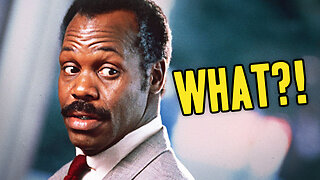Blues Guitar Lessons for Beginners [Funk Rhythm Seventh Chords]
This Blues Guitar Lessons video by Paluzzi Guitar will show how to play a funk rhythm with seventh chords.
Blues Guitar Lessons for Beginners Playlist
https://www.youtube.com/watch?v=-yqzJ7_DyJQ&list=PLOKVJibwUTbr_Fq9kCp3mRfkhsP0f5jvf
Blues Guitar Lessons for Beginners [Funk Rhythm Seventh Chords]
0:00 Lesson Preview
1:07 Lesson Intro
1:22 Bars 1-4
3:28 Bars 5-8
5:22 Seventh Chord Voicings
6:12 Bars 1-8 (slow review)
6:51 Bars 9-12
9:43 Verse 1 (Bars 1-12 slow review)
10:49 Verse 2 (Bars 1-4)
Funk Rhythm Seventh Chords Guitar Lesson
When compared to major chords, seventh (7th) chords have more an ‘off-center’ or ‘funky’ sound. Many Blues, Funk, and Jazz songs are based on 12 Bar progressions with seventh chords. This funk rhythm Blues guitar lesson features seventh (7th) chords being used exclusively as the three primary chords in a twelve-bar progression.
Blues Guitar Lessons for Beginners
With this Blues guitar lesson for beginners, we're going to focus on a funk rhythm strum pattern that uses seventh chords exclusively. If you combine this lesson with the previous level, you'll be able to play a funk style blues rhythm progression in any key.
Seventh (7) Chords on Guitar
The unique makeup of a seventh chord (7th) allows for many seventh chord voicings on guitar. Each of the seventh chords in this guitar lesson are moveable seventh chord shapes. An alternate chord voicing for a seventh chord with a sixth-string bass note is used in this funk rhythm guitar lesson. By extending the fourth/‘pinky’ finger to fret an additional note on the second string, a variation in tone or color is added while the chord still remains a seventh (7th) chord. For example, the same four notes that makeup an ‘A7' chord (‘A’, ‘C sharp’, ‘E’, ‘G’) would be found in both the standard and alternate seventh chord shapes.
Blues Funk Rhythm Guitar
The funk rhythm is established with a ‘ down... (chop)... up-down-up-down... (chop)’ strum pattern. The ‘chop’ effect (notated with x’s) is a combination of palm-muting the strings while striking at them to get a percussive, ‘scratchy’ sound that is essential to funk rhythm guitar. Each ‘chop’ represents a beat, very much like a drummer keeping time with a snare drum with a funk rhythm.
12 Bar Blues Funk Rhythm Progression in Eb
This 12 bar blues funk rhythm progression for guitar is moveable, meaning the same seventh chord shapes and changes can be shifted up or down the fretboard and played in other keys. For example, to play a 12 bar funk rhythm progression in ‘F’, simply shift this same progression two frets higher.
Funk Rhythm Seventh Chords Guitar Lesson Review
Now in theory when you have a movable Blues Funk Rhythm progression you can play in any key, but on guitar it's simply not feasible to play too high up on the fretboard. With this funk rhythm progression, you have about six keys that you can play in now. If you review the previous funk rhythm lesson, we now have an alternate approach that allows you to play in the remaining
six keys. With both funk rhythm put together, you can play a funk style progression in any key.
Once you have verses one and two memorized, the final step with this funk rhythm lesson is to go back to the beginning of the video and see if you can keep up with the lesson preview.
Paluzzi Guitar
The objective of the Paluzzi Guitar video series is to help establish a foundation of guitar fundamentals by applying various playing techniques (rhythm, fingerstyle, and soloing) to various styles of music. The more playing styles and techniques a guitarist can learn, the more diverse and self-sufficient a guitarist will become. A self-sufficient guitarist can then teach themselves, communicate with other musicians, and even write their own music once a solid foundation of fundamentals is established.
The Creative Guitarist Method Series was written and designed by Kevin J. Paluzzi of Paluzzi Guitar Instruction in San Diego, CA. For more information on private lessons and books, go to:
There really isn’t any one particular playing style or technique required in order to classify someone as a guitarist. For example, Andres Segovia, the Beatles, and Carlos Santana are all considered legendary performing guitarists, but each has his own particular style or technique (fingerstyle, strumming, and soloing) for playing. Every guitarist will have their own personal preferences when it comes to what style of music they would initially like to learn. Some may have a more-specific goal (singer/songwriter, soloist, etc.), while others may prefer a more general or overall approach to learning various playing styles and techniques. The Paluzzi Guitar series of books and videos are designed with a ‘pick and choose’ topic format (songwriting, soloing, etc.) so that once the Guitar Basics are completed, the guitarist can decide to focus on whatever topic they wish to study.
-
![Blues Rhythm Guitar Lessons for Beginners [12 Bar Texas-Style]](https://hugh.cdn.rumble.cloud/s/s8/1/9/u/8/h/9u8hc.0kob-small-Blues-Rhythm-Guitar-Lessons.jpg) 10:50
10:50
PaluzziGuitar
2 years agoBlues Rhythm Guitar Lessons for Beginners [12 Bar Texas-Style]
457 -
![Blues Rhythm Guitar Lessons for Beginners [Easy Bass Line]](https://hugh.cdn.rumble.cloud/s/s8/1/j/c/7/h/jc7hc.0kob-small-Blues-Rhythm-Guitar-Lessons.jpg) 10:39
10:39
PaluzziGuitar
2 years agoBlues Rhythm Guitar Lessons for Beginners [Easy Bass Line]
497 -
![Blues Rhythm Guitar Lessons for Beginners [12 Bar Texas-Style]](https://hugh.cdn.rumble.cloud/s/s8/1/a/G/9/h/aG9hc.0kob-small-Blues-Rhythm-Guitar-Lessons.jpg) 12:37
12:37
PaluzziGuitar
2 years agoBlues Rhythm Guitar Lessons for Beginners [12 Bar Texas-Style]
4574 -
![Blues Rhythm Guitar Lessons for Beginners [12 Bar A Shuffle]](https://hugh.cdn.rumble.cloud/s/s8/1/I/7/7/h/I77hc.0kob-small-Blues-Rhythm-Guitar-Lessons.jpg) 10:22
10:22
PaluzziGuitar
2 years agoBlues Rhythm Guitar Lessons for Beginners [12 Bar A Shuffle]
446 -
![Blues Soloing Guitar Lessons for Beginners [Open E Riffs]](https://hugh.cdn.rumble.cloud/s/s8/1/n/P/2/h/nP2hc.0kob-small-Blues-Soloing-Guitar-Lesson.jpg) 6:42
6:42
PaluzziGuitar
2 years agoBlues Soloing Guitar Lessons for Beginners [Open E Riffs]
663 -
![Blues Guitar Lessons for Beginners [How to Play E Shuffle Rhythm]](https://hugh.cdn.rumble.cloud/s/s8/1/D/_/X/g/D_Xgc.0kob-small-Blues-Guitar-Lessons-for-Be.jpg) 8:10
8:10
PaluzziGuitar
2 years agoBlues Guitar Lessons for Beginners [How to Play E Shuffle Rhythm]
581 -
![Seventh Chords Guitar Lesson for Beginners [12 Bar Blues Funk Rhythm]](https://hugh.cdn.rumble.cloud/s/s8/1/w/Z/8/o/wZ8oc.0kob-small-Seventh-Chords-Guitar-Lesso.jpg) 15:55
15:55
PaluzziGuitar
2 years agoSeventh Chords Guitar Lesson for Beginners [12 Bar Blues Funk Rhythm]
2913 -
 9:59
9:59
Silver Dragons
21 hours agoBullion Dealer on Silver’s BIGGEST MOVE in a Decade
30.2K34 -
 17:32
17:32
JoBlo Originals
21 hours agoWhat Happened to DANNY GLOVER?
35.3K22 -
 22:14
22:14
MYLUNCHBREAK CHANNEL PAGE
17 hours agoAngels Helped Build the Old World?
40.8K35